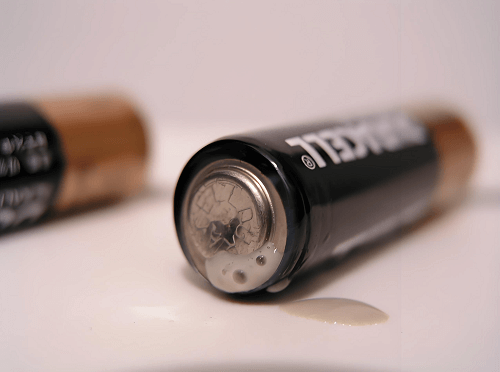Lithium batteries provide power for modern devices, but the volatilization and leakage of their core material, electrolyte, are hidden risks. Electrolytes are usually composed of organic solvents (such as carbonates) and lithium salts (such as LiPF₆). Once leaked, they will not only corrode the equipment, but also release toxic gases. This article will analyze the causes of leakage and provide practical prevention and response solutions.

I. Why does the electrolyte leak?
1. High temperature volatilization:
When the temperature exceeds 60°C, the carbonate solvents in the electrolyte are easy to vaporize, causing the internal pressure of the battery to increase.
If there are defects in the battery packaging (especially soft-pack batteries), the gas will open the sealing layer and cause leakage.
2. Physical damage:
Dropping, squeezing or puncturing will cause the battery shell to rupture, and the liquid electrolyte will flow out directly.
3. Long-term aging:
After the battery is recycled, microcracks may appear on the aluminum-plastic film edge sealing or metal shell welding points due to stress fatigue.
II. The hazards of leakage should not be underestimated
- Toxicity risk: When the electrolyte comes into contact with air or moisture, it may decompose to produce hydrofluoric acid (HF), which is highly corrosive to the skin and respiratory tract.
- Equipment damage: Leaked electrolyte corrodes circuit boards and metal contacts, causing permanent equipment failure.
- Fire hazard: Leaked organic solvents are flammable and may cause combustion if they encounter electric sparks.
III. Four measures to prevent electrolyte leakage
1. Choose reliable batteries:
- Give priority to products that have passed UL, IEC and other safety certifications, and avoid using low-priced and low-quality batteries.
2. Avoid extreme environments:
- Do not expose the device to high temperatures for a long time (such as the temperature in the car can reach 70°C in summer);
- Avoid charging below -20°C in winter to prevent the electrolyte from expanding after solidification.
3. Check the device regularly:
- If you find that the battery of your mobile phone or laptop is bulging, or smell a pungent chemical odor, stop using it immediately;
- The battery pack of drones and electric vehicles needs to be checked every six months for deformation.
4. Optimize charging habits:
- Avoid charging while using (increases heating);
- Use the original charger to prevent overvoltage from causing electrolyte decomposition.
IV. Emergency treatment steps after leakage
1. Personal protection:
Wear gloves and masks to avoid direct contact with liquids or gases.
2. Isolation and ventilation:
- Move the leaking equipment outdoors or to a ventilated place, away from fire sources;
- Do not rinse with water (LiPF₆ generates HF when in contact with water).
3. Neutralization treatment:
Cover the leaking area with lime powder (calcium carbonate) or a special neutralizer, and clean it after standing for 1 hour.
4. Professional recycling:
Damaged batteries must be handled by professional recycling agencies and cannot be discarded at will (electrolyte is a hazardous waste).
V. Future trends: from liquid to solid
The leakage problem of traditional liquid electrolytes has promoted technological innovation. Solid-state batteries use non-flammable solid electrolytes (such as sulfides and oxides) to completely eliminate the risk of leakage. At present, Toyota, CATL and other companies have launched prototypes, which are expected to be gradually commercialized before 2030.
Conclusion
Although electrolyte leakage is a potential defect of lithium batteries, the risk is completely controllable through reasonable use and timely response. Remember: safety is no small matter, and prevention is the key!


